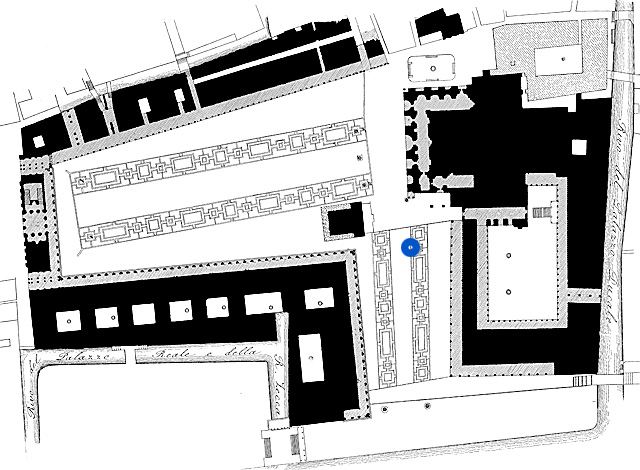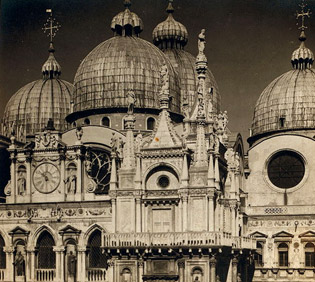Basilica San Marco
ca. 1071, Venice, Italy


Photo of the Basilica San Marco, by Sergey Mikhaylovich Prokudin-Gorsky (1863-1944)
In 827, Venetian merchants stole the body of St. Mark the Evangelist from Alexandria in Egypt, where he had served as a bishop before being martyred around 68 AD. Following the relic's transfer to the Rialto, they were solemnly received by the bishop and doge of Venice and subsequently deposited in the ducal chapel. According to local legend, St. Mark was the founder not only of the Church of Alexandria but also of the Church of Aquileia, from which Venice derived its claim to have inherited the patriarchal see.
The possession of the body of St. Mark, the legendary founder of the patriarchate of Aquileia (which was later transferred to Grado and then to Venice) forcefully supported the Venetians' claim for ecclesiastical independence and primacy in the Upper Adriatic and led to a flourishing cult centered around the evangelist's relics in the ducal chapel. To accommodate the new cult, the doge splendidly rebuilt his house chapel in the 830s, but a fire destroyed this first church of St. Mark's—or: San Marco as it is known in Italian—in 976. A second church was built in its place shortly thereafter, and a third one, begun in 1063 and completed in the 1090s, was modeled on Emperor Justinian's 6th-century church of the Holy Apostles in Constantinople and still stands today.
In subsequent centuries, many prominent relics of Christ—among them fragments of the True Cross, Christ's Holy Blood, and thorns from the Crown of Thorns—and relics of prominent saints—among them relics of Sts. George, John the Baptist, and Isidore—entered the Church of St. Mark's and were deposited in its treasury. Following the sack of Constantinople in 1204, the facades of San Marco were richly decorated with marble spolia, or spoils, many of which had formerly decorated churches, palaces, and public squares in the imperial city. At this time, porphyry statues depicting four Roman emperors of the Tetrarchic period (293–306) were set into the Southwest corner of the treasury, and two monumental piers from the church of St. Polyeuktos in Constantinople were placed in front of the baptistery's south façade, creating an imposing entrance situation for visitors entering the city and church from the lagoon.
Exhibition Objects Associated with Venice
- Reliquary of the Arm of St. George
- Reliquary Box
- Reliquary of St. Marina




